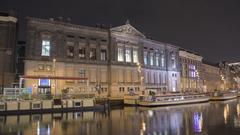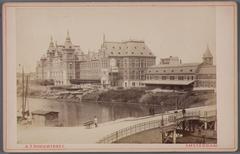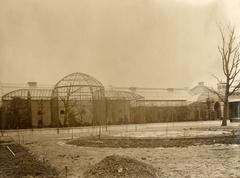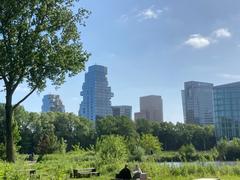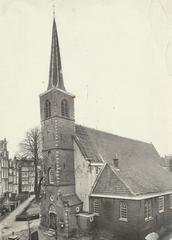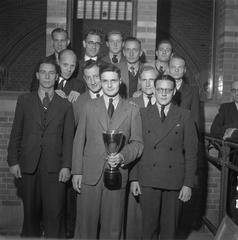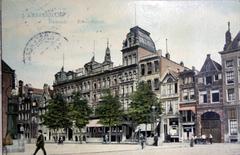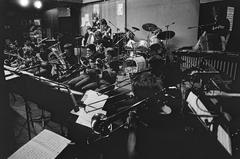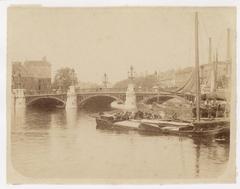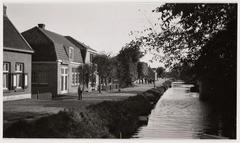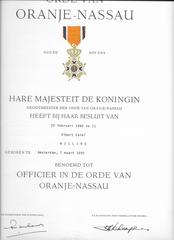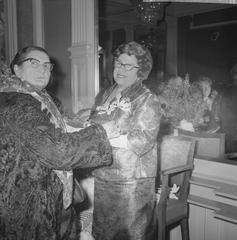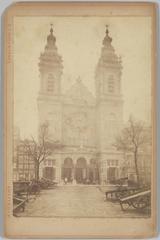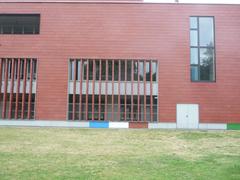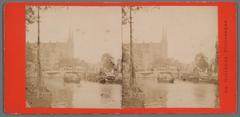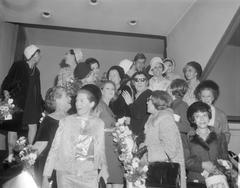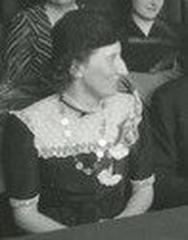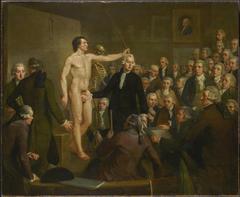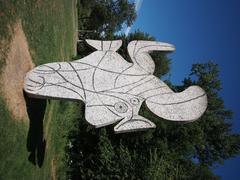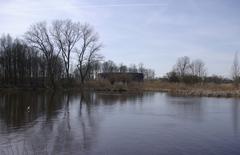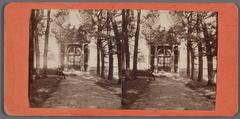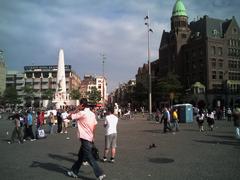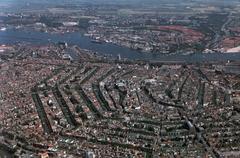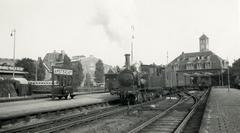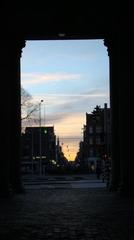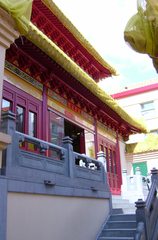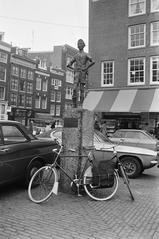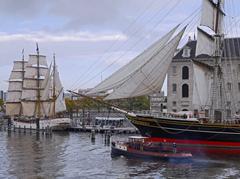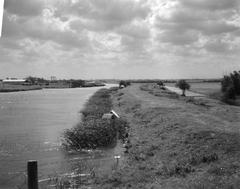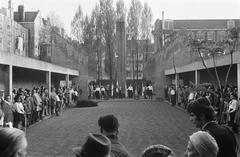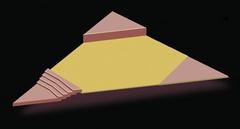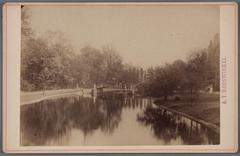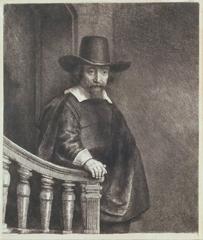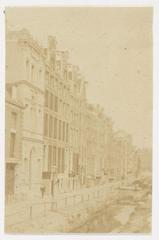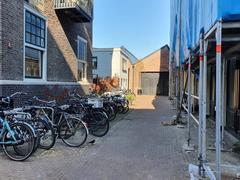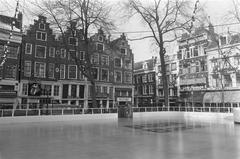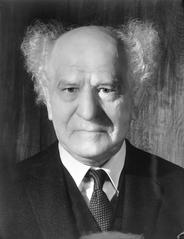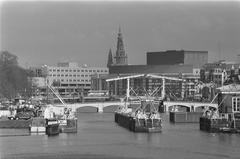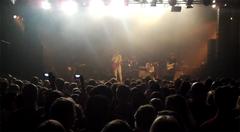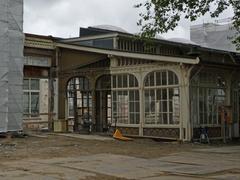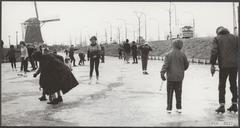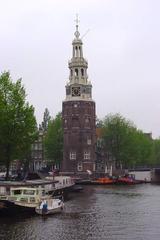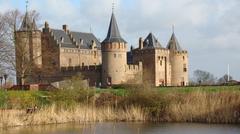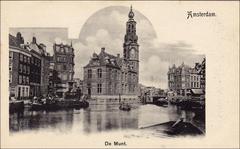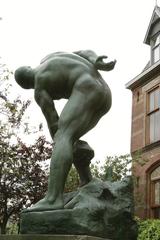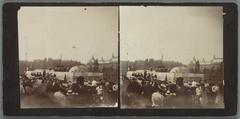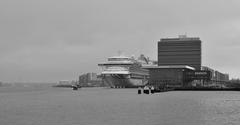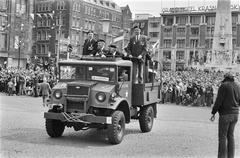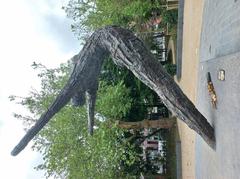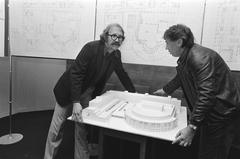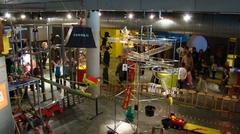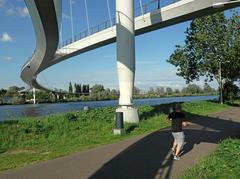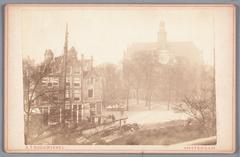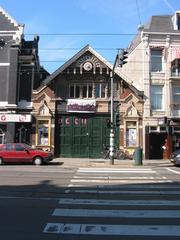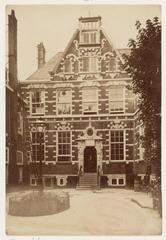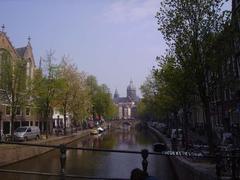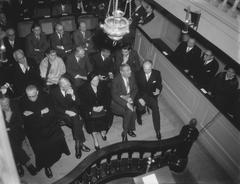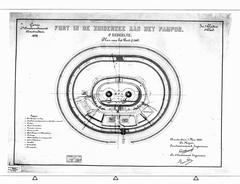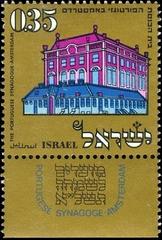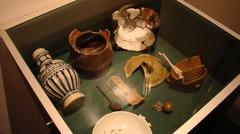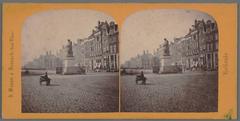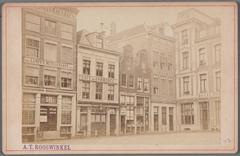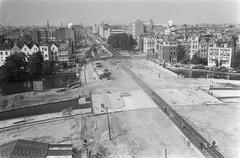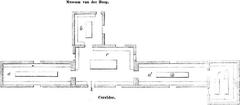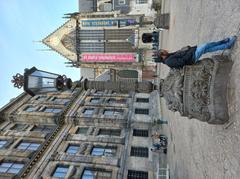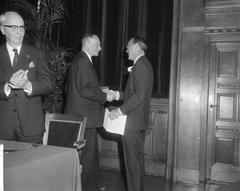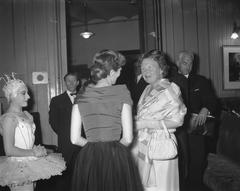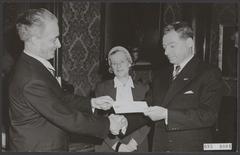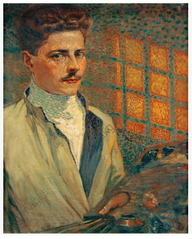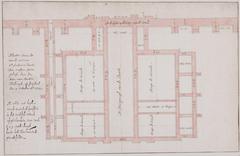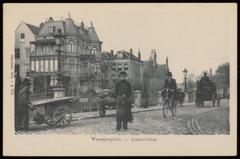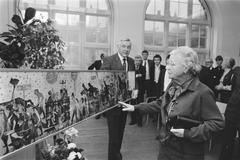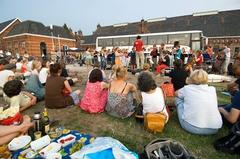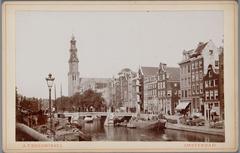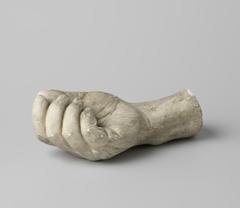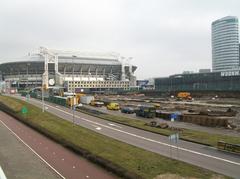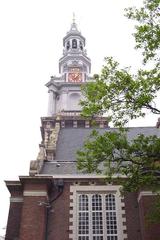
Van Randwijk Monument: Visiting Hours, Tickets, and Amsterdam Historical Sites Guide
Date: 03/07/2025
Introduction
Nestled in the heart of Amsterdam, the Van Randwijk-Monument stands as a poignant tribute to the Dutch resistance during World War II. Dedicated to Hendrik Mattheus van Randwijk (1909–1966)—journalist, poet, and a key figure in the resistance—the monument symbolizes the Netherlands’ enduring fight for freedom and moral courage. Located in the tranquil H.M. van Randwijkplantsoen along the Weteringcircuit, this minimalist brick memorial invites reflection on the cost of liberty and the importance of vigilance against tyranny. Its setting, easily accessible and near major attractions like the Rijksmuseum and Heineken Experience, makes it an essential stop for anyone exploring Amsterdam’s rich historical tapestry. (Traces of War, 4en5mei.nl, Amsterdam Official Tourism)
Location and Physical Description
The Van Randwijk-Monument, also known as Herdenkingsmuur H.M. van Randwijkplantsoen, is situated in a small park (plantsoen) along the Weteringcircuit in central Amsterdam. Its coordinates (52.359158, 4.892658) place it within walking distance of the city’s most visited museums and cultural landmarks. The monument itself is a rectangular brick wall, about two meters high, bearing a powerful inscription in white lettering—without statues or elaborate embellishments, ensuring the focus remains on its message and meaning. (Traces of War)
Historical Context and Symbolism
The Resistance and Van Randwijk’s Legacy
Hendrik Mattheus van Randwijk was a leading voice of the Dutch resistance, editing the clandestine newspaper Vrij Nederland during the Nazi occupation. The Weteringcircuit area, where the monument stands, was known for resistance activity and, tragically, also as an execution site for resistance fighters.
The monument is inscribed with lines from Van Randwijk’s poem “Bericht aan de levenden”:
HENDRIK MATTHEUS VAN RANDWIJK 1909–1966
EEN VOLK DAT VOOR TIRANNEN ZWICHT
ZAL MEER DAN LIJF EN GOED VERLIEZEN
DAN DOOFT HET LICHT…
Translated:
A people that yields to tyrants
will lose more than life and property
then the light will be extinguished…
These words, written in 1953, are a lasting call to moral vigilance and collective responsibility, resonating deeply within Dutch commemorative culture. The monument’s understated design, by Gerda van der Laan and unveiled in 1970, underscores the gravity and universality of its message. (4en5mei.nl, foww.nl)
Visiting Hours, Tickets, and Accessibility
- Hours: Open 24/7; the monument is always accessible as it is located in a public park.
- Entry Fee: None. Visiting the Van Randwijk-Monument is free of charge at all times.
- Accessibility: The park and surrounding paths are wheelchair accessible, though some surfaces may be uneven in places. Benches offer rest spots for reflection. (evendo.com)
Getting There
Public Transportation
- From Amsterdam Central Station:
- Tram lines 12 (to ‘Hobbemastraat’) or 4 (to ‘Museumplein’), then a 10–15 minute walk.
- Nearby Tram Stops:
- Weteringcircuit, Rijksmuseum, and Spiegelgracht (served by lines 1, 3, 5, 7, 12, 19, 24).
- By Bicycle/On Foot:
Amsterdam’s cycling infrastructure makes the monument easily accessible by bike. Walking from Museumplein or the city center is straightforward and scenic.
By Car
- Parking is limited and expensive in central Amsterdam; public transport is strongly recommended. Closest garages include Q-Park Heinekenplein. (evendo.com)
Visitor Experience and Practical Tips
Atmosphere
The monument’s green setting beside a canal offers a peaceful retreat for contemplation. The simple yet evocative design encourages reflection on the sacrifices made for freedom.
Etiquette
- Maintain a respectful demeanor—avoid loud conversation and disruptive behavior.
- Photography is permitted; be mindful of others who may be visiting for personal reflection.
- No eating or drinking at the monument itself.
Facilities
There are no dedicated restrooms or visitor centers at the site, but amenities are available at nearby cafés and museums.
Safety
Amsterdam is generally safe, but always be aware of your surroundings and watch out for pickpockets, particularly in busy areas. The monument area is well-lit and frequented by locals and tourists. (WanderlustingK)
Weather
Amsterdam’s weather can be changeable; bring an umbrella or raincoat, especially in spring and autumn. (MintNotion)
Best Times to Visit
- Remembrance Day (May 4): The monument is a focal point for annual Dutch National Remembrance Day ceremonies. Expect crowds and a solemn atmosphere.
- Quiet Reflection: For a more tranquil experience, visit during weekday mornings or late afternoons.
Nearby Attractions
- Rijksmuseum: Masterpieces by Rembrandt and Vermeer, a short walk away. (Amsterdam Official Tourism)
- Heineken Experience: Interactive brewery tours nearby.
- Museumplein: Home to the Van Gogh Museum and Stedelijk Museum.
- Vondelpark: Amsterdam’s largest park, ideal for a stroll after your visit.
- Anne Frank House: Accessible via tram; highly recommended for WWII history enthusiasts.
Digital Engagement and Interpretive Resources
- Digital Tributes: Visitors can leave a virtual flower and message at the monument via 4en5mei.nl.
- Guided Tours: Many WWII-themed walking tours of Amsterdam include the monument; audio guides and apps like Audiala provide narrative context. (Audiala)
- Further Learning: The Dutch Resistance Museum (Verzetsmuseum) and Amsterdam City Archives offer in-depth exhibitions on the resistance and Van Randwijk’s legacy.
Frequently Asked Questions (FAQ)
Q: What are the visiting hours?
A: The monument is open to the public 24 hours a day, 7 days a week.
Q: Is there an entrance fee or are tickets required?
A: No, the site is always free to visit.
Q: Is the site accessible for wheelchair users?
A: Yes, the park and monument are accessible, though some paths may be uneven.
Q: Can I take photographs?
A: Yes, but please be considerate of others.
Q: Are there restrooms or a visitor center?
A: No, but nearby cafés and museums provide amenities.
Q: How do I reach the monument by public transport?
A: Take trams to Weteringcircuit, Rijksmuseum, or Spiegelgracht, then walk a short distance.
Cultural and Contemporary Relevance
The Van Randwijk-Monument stands as a lasting symbol of resistance, moral integrity, and the fight for human rights. Its minimalist design and powerful inscription continue to prompt reflection on the dangers of yielding to oppression—an enduring reminder for both residents and visitors that freedom must be preserved and honored.
Enhance Your Visit
- Combine your stop with visits to Amsterdam’s nearby museums and historical sites.
- Use digital resources and guided tours for deeper insights.
- Follow local event calendars for commemorative ceremonies and educational programs.
For more insights, check out our articles on Dutch wartime history and other Amsterdam memorials. Stay updated on events and travel tips by following us on social media, and download the Audiala app for curated guides and audio tours. (Audiala)
Summary and Call to Action
The Van Randwijk-Monument in Amsterdam is a profound site of remembrance and reflection, commemorating the courage of those who stood against tyranny. Free to visit and accessible at all hours, it invites both quiet contemplation and active engagement with the city’s wartime history. Make it part of your Amsterdam itinerary—whether for a solitary moment of reflection, participation in Remembrance Day ceremonies, or as a highlight on a historical walking tour. Let the monument’s message inspire your journey and deepen your understanding of freedom’s enduring value. (4en5mei.nl, Traces of War, Audiala)
Sources and Further Reading
- Traces of War
- 4en5mei.nl
- Amsterdam Official Tourism
- Evendo
- foww.nl
- MintNotion
- WanderlustingK
- Audiala
Images to include:
- Photograph of the Van Randwijk-Monument with alt text: “Van Randwijk-Monument brick wall with poem inscription at Weteringcircuit, Amsterdam.”
- Map showing the location of the Van Randwijk-Monument in Amsterdam with alt text: “Map showing the location of the Van Randwijk Monument in Amsterdam.”


